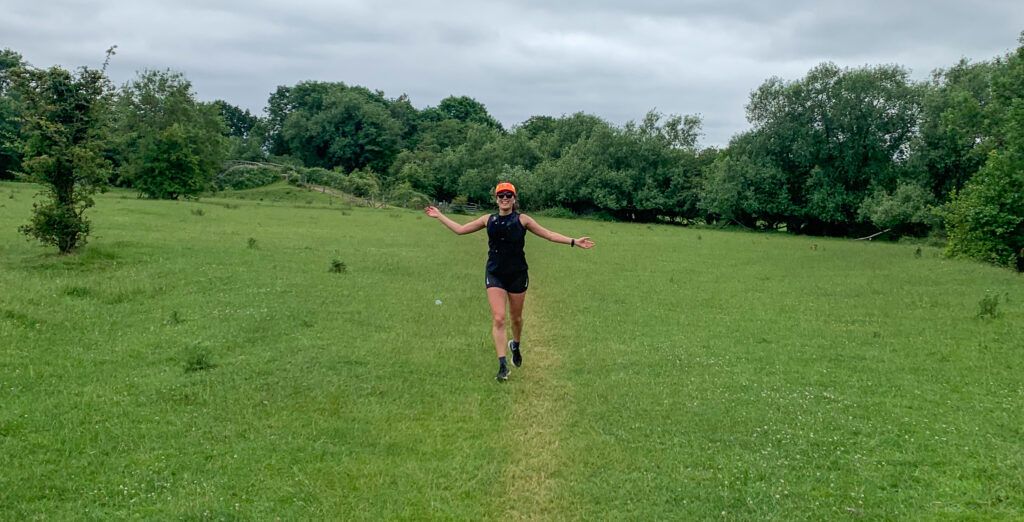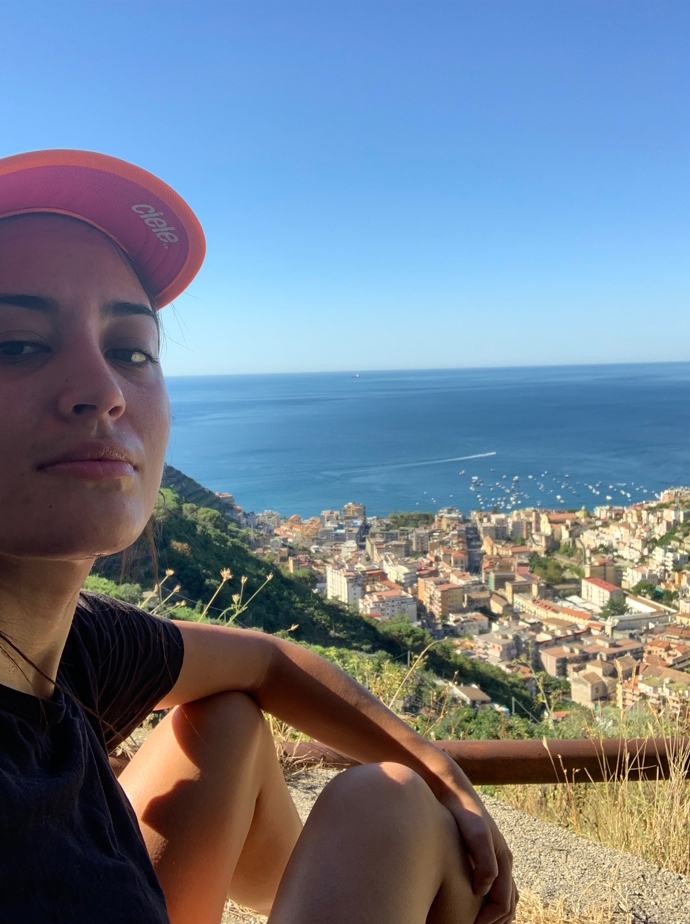Kim’s Useful Accessories for Marathon Training
Our Jog Division are training for the 2021 Therme Manchester Marathon on Sunday 10th October. In this latest article Kim takes a look at the items she finds most useful to assist her performance.
Prior to starting marathon training, I’d never given deep-thought to the clothing and accessories I wear during my runs. As long as it’s sweat-wicking, chaff-avoiding and conveniently-priced, I’d usually buy the exact same item twice over to avoid needing to overthink what I’m wearing any further. Anything above this felt extraneous.
It wasn’t until recently that I started to seriously think about how I could make my runs more enjoyable, comfortable and dare I say it… faster. Right now, I would say I’m a regular runner; I wouldn’t go as far as calling myself an athlete but over the past year, I’ve run casually at least three times a week and like many of you, I’m currently training for the Manchester Marathon (my second marathon).
In this article, I’d like to draw on my experience and tell you about the five items beyond the essentials that have been most useful for me during my marathon training so far.
A big caveat of this article is that it’s just a guide. Marathon training should be accessible to most people without high-performance clothing and fancy peripherals so I’ve also provided some low/no-cost alternatives too!

1. GPS Running Watch
Once you own a GPS watch, you quickly learn that the features are hard to beat. At a basic-level, a GPS watch will tell you how fast you’re running and how far you’ve run, helping you quantify your progress during a run. Beyond this some watches will also include additional features such as elevation, heart rate tracking, VO2 max calculations and calories spent; all features that might feel excessive to a first-time marathoner but useful to others nonetheless.
Though, I often find that the real benefit of a GPS watch comes with analysing the data afterwards. Whilst it’s true that you can easily get lost in the data, most GPS watches are supported by a mobile app which will do the calculations for you, providing you with how your run compares against other runs of the same distance and same route (amongst other things). I also enjoy reviewing how my pace changes throughout a run where I’m often slower as a warm-up and get faster throughout the run. Having access to this type of data is hands-down the most useful tangible item that has helped me improve my training
Some runners will also benefit from the fact that some GPS watches will allow you to leave your phone at home. Though, I always bring my phone with me as a safety measure, to stream music and to pay for things just in case I desperately need something (I know some watches may do these things also!).
Low-cost alternative:
If your phone has GPS (I assume the majority will in this modern age!), you can simply download an app like Strava or RunKeeper to your phone and use that. Alternatively, you could also run with any water-resistant watch if you’re more fixated on time-moving and are okay with sacrificing distance accuracy.
2. Running belt or running vest
Whether you need additional pockets or you’re wanting to carry a hydration bladder, once you start going long, it’s very likely you’d benefit from a running belt or vest.
There are a lot of options to choose from, though this ultimately comes down to personal preference. I’ve opted for both a running belt for shorter runs which I typically carry a mask, tissues (because you never know when hay fever will attack), keys and my phone. When I use my running vest, I’ll carry all these items plus a soft water flask and sometimes an additional layer and hand sanitiser.
Some brands will also offer female-specific models which some women may find fit their body-shape better.
Low-cost alternative:
Sometimes I’ll store stuff (my mask, phone, etc.) in the sleeves of a jumper tied around my waist! I feel like I’m hitting two birds with one stone when I do this!
3. Running water bottle
Even in the UK, the summer heat can make even the shortest runs tough so being able to quench your thirst whenever you feel the need to will help you stay more comfortable.
The main point to consider when getting a running water bottle is how you plan to carry it which is largely down to personal preference. Ultimately your options boil down to using either a flask housed in a lightweight running backpack, vest or belt, or a purpose-built hand-held bottle.
My running vest has capacity for two 500ml soft water flasks. I’ve found this to be perfect for longer runs. For shorter runs, I usually opt to hydrate afterwards or I’ll sometimes carry the soft flash in my hand.
Low-cost alternative:
Any small water bottle will work as long as you’re comfortable carrying it in your hand! Whenever I used to do this I found it easier to carry if I ran with it partially full and slightly scrunched up to provide a better grip.

4. Anti-chafing balm
For some, anti-chafing balm is synonymous with running shoes, though it took me a while to discover the benefits of using it. As you’re upping the distance on your marathon training, you’re likely discovering the dread that comes with sustained, repetitive movements. Whether it’s caused by body parts rubbing together or clothing causing friction against your skin, once you’ve had it, you’ll know how quickly it can ruin a run.
Each runner will apply it to different areas, though for me I’ll usually apply it to my thighs and where the underwire of my bra sits. Though some runners may use it on their chest, armpits and groin, or where their running vest, belt or clothing is likely to rub.
While an anti-chafing balm might not allow you to always completely evade chafing, it will minimise the impacts. You can also try using kinesiology tape for more prone spots.
Low-cost alternative:
A common salve many people already own is vaseline or another petroleum jelly. If you don’t own this already, you might find that anti-chafing balm comes at a comparative cost. Another way to avoid chafing at its roots is to review what you wear.
5. Running jacket
If you’re living in the UK, you might find it difficult to forego all-season running without some form of running jacket. While there’s endless varieties to choose from, what you opt for depends completely on your preference and the extremities you choose to run in.
Living in the South East, whilst the weather has its occasional dull and wet moments, it’s fairly rare I’ll find the weather too extreme to run in (with the odd exception of snow and heavy torrential rain). After reading endless reviews, I found that waterproof running jackets likely weren’t for me due to fabric breathability, so I opted for an ultralight water and wind-resistant jacket which gave me the benefit of stowability and versatility. I’ve found my jacket is perfect for both colder summer days, right through to an extra layer in freezing winter nights. Whilst it still suffers some of the breathability issues that are inescapable in a waterproof, it’s less severe.
Low-cost alternative:
You could use any existing or wind jacket you have. The only caveat to this is that it’s likely to lack the breathability or ultra lightness of a running jacket. You also find that they’re awkwardly loud.
